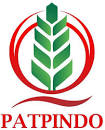KUALITAS ORGANOLEPTIK BAGIAK DENGAN FORTIFIKASI TEPUNG KACANG GUDE (Cajanus cajan)
DOI:
https://doi.org/10.36526/jipang.v6i02.4716Keywords:
Bagiak, fortification,local food, organoleptic test, pigeon pea.Abstract
Bagiak is a typical snack from Banyuwangi and is one of the archipelago's culinary heritages that is still a favorite. However, to improve the nutritional content and quality of Bagiak, there is a need for new innovations in making Bagiak. One alternative solution is to make Bagiak through fortification of mung bean flour. The challenge is that the utilization of pigeonpea to be processed into food is still rare, so it is still less common in the community. Therefore, this study aims to analyze the organoleptic quality of fortified pigeonpea flour. This research is a type of experimental research conducted in July-September 2024. The experimental design uses one factor, namely the addition of mung bean flour at P0 (0%), P1 (15%), P2 (30%), P3 (45%), P4 (60%), P5 (75%). The panelists used were 75 people who were untrained panelists. The organoleptic parameters studied were the quality of taste, aroma, texture, and color. Data analysis used a Likert scale to determine the acceptability of panelists for the pigeonpea. Based on the results of organoleptic testing that has been carried out on 75 panelists, it can be seen that the P2 treatment (addition of 30% pigeon pea flour) is the most favored by panelists. This can be seen from the score of the flavor parameter of 91%, aroma of 92%, color of 91%, and texture of 88%. The conclusion of this study is that Bagiak with fortification of mung bean flour is very well received by panelists, especially in the P2 treatment (30%) where the final average acceptance score of panelists is 91% which means very good. Therefore, there is a need for more utilization of mung beans as an additional ingredient in various foods.
References
Dewi et al. (2010). Karakteristik sensoris, nilai gizi dan aktivitas antioksidan tempe kacang gude (cajanus cajan (l.) millsp.) dan tempe kacang tunggak (vigna unguiculata (l.) walp.) dengan berbagai variasi waktu fermentasi. Biofarmasi, 12(2), 73-82. https://doi.org. 10.13057/biofar/f120204
Herlina et al. (2022). Pengembangan usaha bagiak (jajanan khas etnis osing) melalui produksi bagiak kaya serat dan aplikasi bussines model canvas (bmc). Jurnal Hasil Pengabdian Kepada Masyarakat Universitas Jember. 1(2), 71-77. https://journal.unej.ac.id/JPM/article/download/211/70/625
Inayah et al. (2019). Daya terima masyarakat terhadap biskuit dengan substitusi tepung kacang gude. Media Gizi Pangan, 26(2), 153-164. https://journal.poltekkes-mks.ac.id/ojs2/index.php/mediagizi/article/download/485/pdf
Irwan et al. (2019). Karakterisasi komponen gizi kacang gude (Cajanus cajan) berdasarkan variasi metode preparasinya. Teknologi Pangan: Media Informasi dan Komunikasi Ilmiah Teknologi Pertanian, 15(2), 241-249. https://doi.org/10.35891/tp.v15i2.5475
Kamarudin, I. (2022). Metodologi Penelitian Kualitatif dan Kuantitatif. Diedit oleh S. Naila. Padang Sumatra Barat: PT global Eksekutif Teknologi.
Lestari, D.A. (2022). Mengenal Jenis Kacang-Kacangan Yang Baik Bagi Tubuh, Hellosehat.com
Lina O., R., & Ambar F. (2022). “Organoleptic And Dietary Fiber Quality Of Black Pigeo Pea Flour As Bioencapsulation Material,” Jurnal Inovasi Penelitian, 3(2722–9467).
Murni et al. (2024). Pangan lokal tepung kacang gude (cajanus cajan (l) millsp) dalam pembuatan brownies kukus. Jurnal Kuliner, 4(1), 54-66. https://doi.org. http://10.0.93.79/jk.v4i1.75708
Parwata, I.,G., A.,P.,O., & Marriani. (2022). Kacang Gude ( Cajanus cajanL. Huth) Sumber Pangan Potensial Kering, WordPres and HitMag.
Prasanti et al. (2024). Organoleptic quality of black bugis cake made from gude bean flour as a substitute for black glutinous rice flour. ESA: Indonesian Journal of Applied and Industrial Science, 3(5), 519-536. https://doi.org/10.55927/esa.v3i5.11336.
Prasanti.,K & Sudiarta,.N. (2024). Kualitas organoleptik kue bugis hitam berbahan dasar tepung kacang gude sebagai substitusi tepung ketan hitam. Jurnal Gastronomi Indonesia, 12(1), 20-36. https://doi.org/10.52352/jgi.v12i1.1226.
Primiani, Cicilia Novi dan Pujiati. 2017. Leguminoceae Kacang Gude (Cajanus Cajan) Dan Manfaatnya Untuk Kesehatan. Jurnal Pendidikan Biologi. Universitas PGRI Madiun.
Saswini, Andi Ade Ula, Veni Hadju, M. M. (2015). Pengembangan Pangan Lokal Kacang Gude (Cajanus cajan) sebagai Alternatif PMT-AS dengan Sumber Protein dan Zat Besi dalam Pembuatan Kue Tradisional Baruasa di Kabupaten Jeneponto.Jurnal Publikasi. Universitas Hasanuddin Makassar. Makassar.
Standar Nasional Indonesia. (2011). Syarat Mutu Biskuit SNI 2973:2011. Jakarta: Dewan Srandar Indonesi, Badan Standarisasi Nasional.
Sugiyono. (2015). Metode penelitian kombinasi. Bandung: Alfabeta.
Downloads
Published
How to Cite
Issue
Section
License
Copyright (c) 2024 Rosiana Ulfa, Bagus Setyawan, Arfiati Ulfa Utami

This work is licensed under a Creative Commons Attribution-ShareAlike 4.0 International License.











